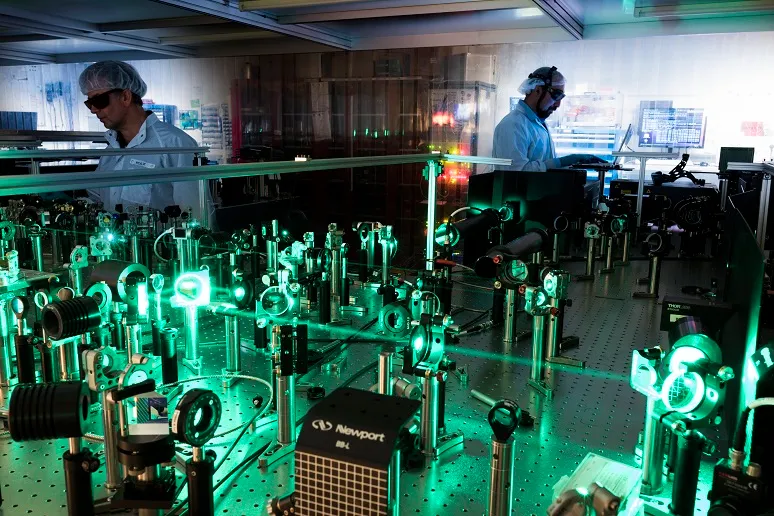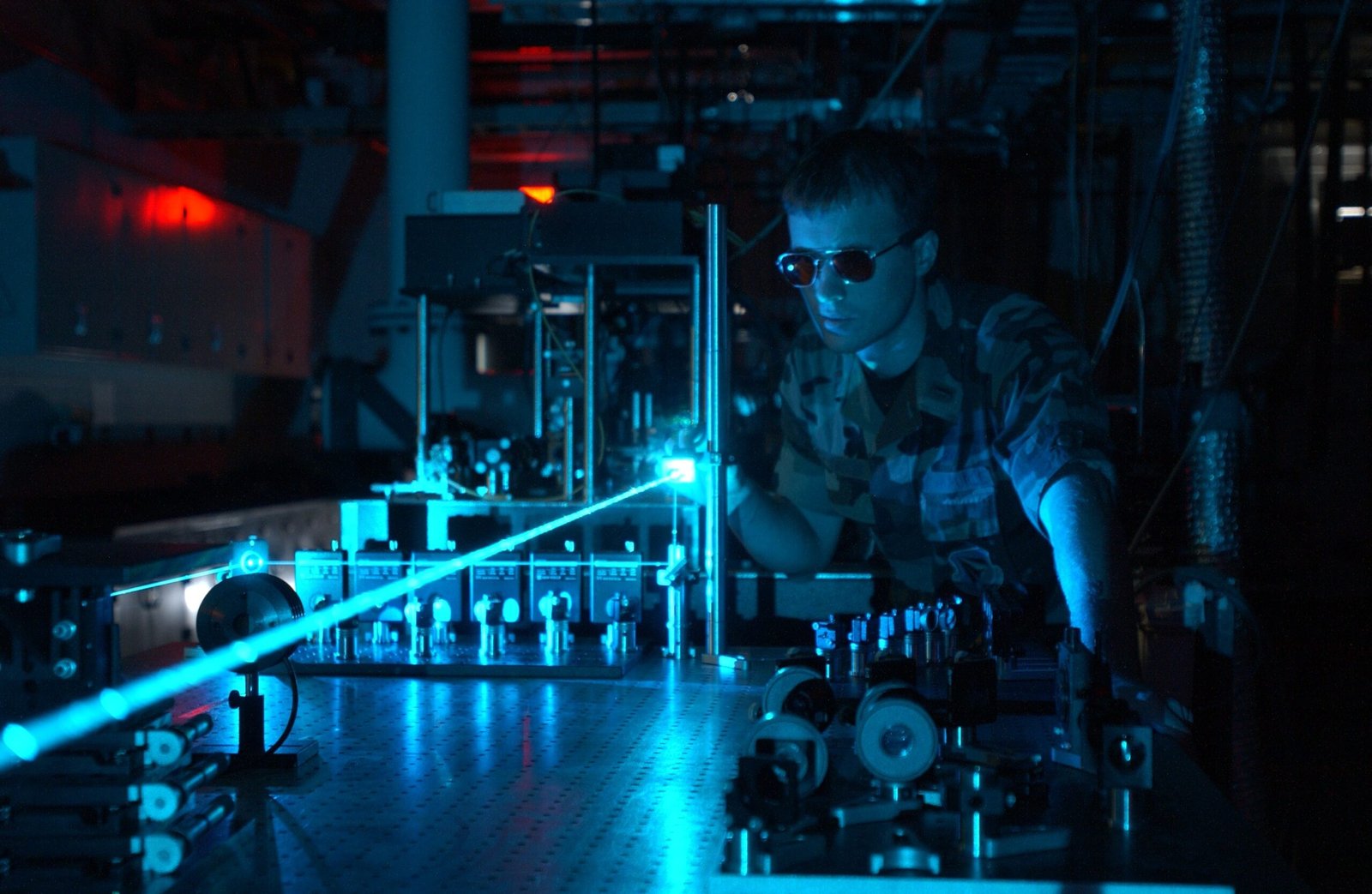In the realm of cutting-edge technology, few advancements have been as transformative and revolutionary as the development of lasers. Among the various applications that have emerged, one stands out for its significance in diverse fields such as telecommunications, medical procedures, and scientific research – Laser Stimulated Emission. This blog post aims to delve into the intricacies of Laser Stimulated Emission, exploring its principles, applications, and the remarkable impact it has had on our modern world.
Contents
I. Understanding the Basics of Laser Stimulated Emission:
A. The Genesis of Laser Technology:
Before diving into Laser Stimulated Emission, it’s crucial to grasp the fundamentals of laser technology. The term “laser” stands for Light Amplification by Stimulated Emission of Radiation. The concept was first introduced by physicist Albert Einstein in 1917, who laid the theoretical groundwork for stimulated emission, a crucial element in laser operation.
B. Stimulated Emission Explained:
Stimulated emission is a quantum phenomenon where an incoming photon stimulates the emission of another photon, identical in energy, phase, and polarization. This process occurs when an atom or molecule in an excited state is struck by a photon, causing it to release two photons. One of these photons is identical to the incident photon, propagating in the same direction and with the same energy, while the other contributes to the de-excitation of the atom.
C. The Birth of Laser Stimulated Emission:
The realization of Einstein’s concept and the practical implementation of laser technology occurred several decades later. The first working laser, developed by Theodore Maiman in 1960, utilized stimulated emission to amplify light waves coherently, creating a concentrated, intense beam known as laser light. This marked the inception of Laser Stimulated Emission as a powerful tool with an array of applications.

II. Principles of Laser Stimulated Emission:
A. Energy Levels and Excitation:
Laser Stimulated Emission relies on the energy levels of atoms or molecules. When these entities absorb energy, typically in the form of photons, they transition to higher energy states. The population inversion, a crucial condition for laser operation, occurs when there are more particles in the excited state than in the ground state.
B. Spontaneous vs. Stimulated Emission:
Spontaneous emission and stimulated emission are two fundamental processes in laser operation. Spontaneous emission occurs when an excited particle spontaneously emits a photon without any external stimulation. In contrast, stimulated emission requires an external photon to induce the emission of a second photon with identical properties.
C. Coherence and Monochromaticity:
One of the distinguishing features of laser light is its coherence, a property that ensures the light waves maintain a consistent phase relationship. This coherence results in a highly focused and directional beam. Additionally, laser light is monochromatic, meaning it consists of a single wavelength or color, contributing to its precision and efficiency in various applications.
III. Applications of Laser Stimulated Emission:
A. Telecommunications:
The backbone of modern communication networks relies heavily on laser technology. Laser Stimulated Emission enables the transmission of information through fiber-optic cables, where coherent laser light pulses carry data over long distances with minimal loss. This application has revolutionized the speed and efficiency of global communication systems.
B. Medical Advancements:
In the medical field, Laser Stimulated Emission has become a versatile tool with applications ranging from surgery to diagnostics. Laser surgery, utilizing the precision of laser beams, has become commonplace in procedures involving eye surgery, dermatology, and even delicate operations within the human body. Additionally, lasers are used for imaging techniques, such as laser-induced fluorescence, aiding in the early detection of diseases.
C. Scientific Research:
Laser technology has opened new frontiers in scientific research. Laser Stimulated Emission plays a crucial role in spectroscopy, allowing scientists to analyze the composition of materials by examining the interaction of laser light with matter. This has applications in chemistry, physics, and environmental science, providing insights into molecular structures and reaction mechanisms.
D. Industrial Applications:
The industrial sector has harnessed Laser Stimulated Emission for various purposes. Laser cutting and welding have become standard techniques in manufacturing processes, offering precision and efficiency. Additionally, lasers are employed in materials processing, marking, and engraving, showcasing the versatility of this technology in shaping and transforming materials.

IV. Challenges and Future Developments:
A. Technical Challenges:
While Laser Stimulated Emission has transformed numerous industries, it is not without challenges. Power consumption, miniaturization, and cost-effectiveness are areas where ongoing research aims to overcome limitations and improve the accessibility of laser technology.
B. Advancements in Quantum Technologies:
The integration of Laser Stimulated Emission with quantum technologies holds promise for the future. Quantum key distribution, quantum computing, and quantum communication are areas where the principles of laser technology, combined with quantum mechanics, could lead to unprecedented advancements with implications for cybersecurity and information processing.
C. Emerging Fields:
As technology evolves, new fields of application for Laser Stimulated Emission continue to emerge. From quantum optics to biophotonics, researchers are exploring novel ways to harness the power of laser technology for innovative solutions in diverse scientific and industrial domains.
V. Conclusion:
In conclusion, Laser Stimulated Emission stands as a testament to human ingenuity and the transformative power of scientific discovery. From its theoretical inception in the early 20th century to its realization in practical applications, laser technology has redefined the way we communicate, heal, explore, and manufacture. As researchers continue to push the boundaries of what lasers can achieve, the future promises even more remarkable developments, unlocking new possibilities and shaping the course of technological evolution.



